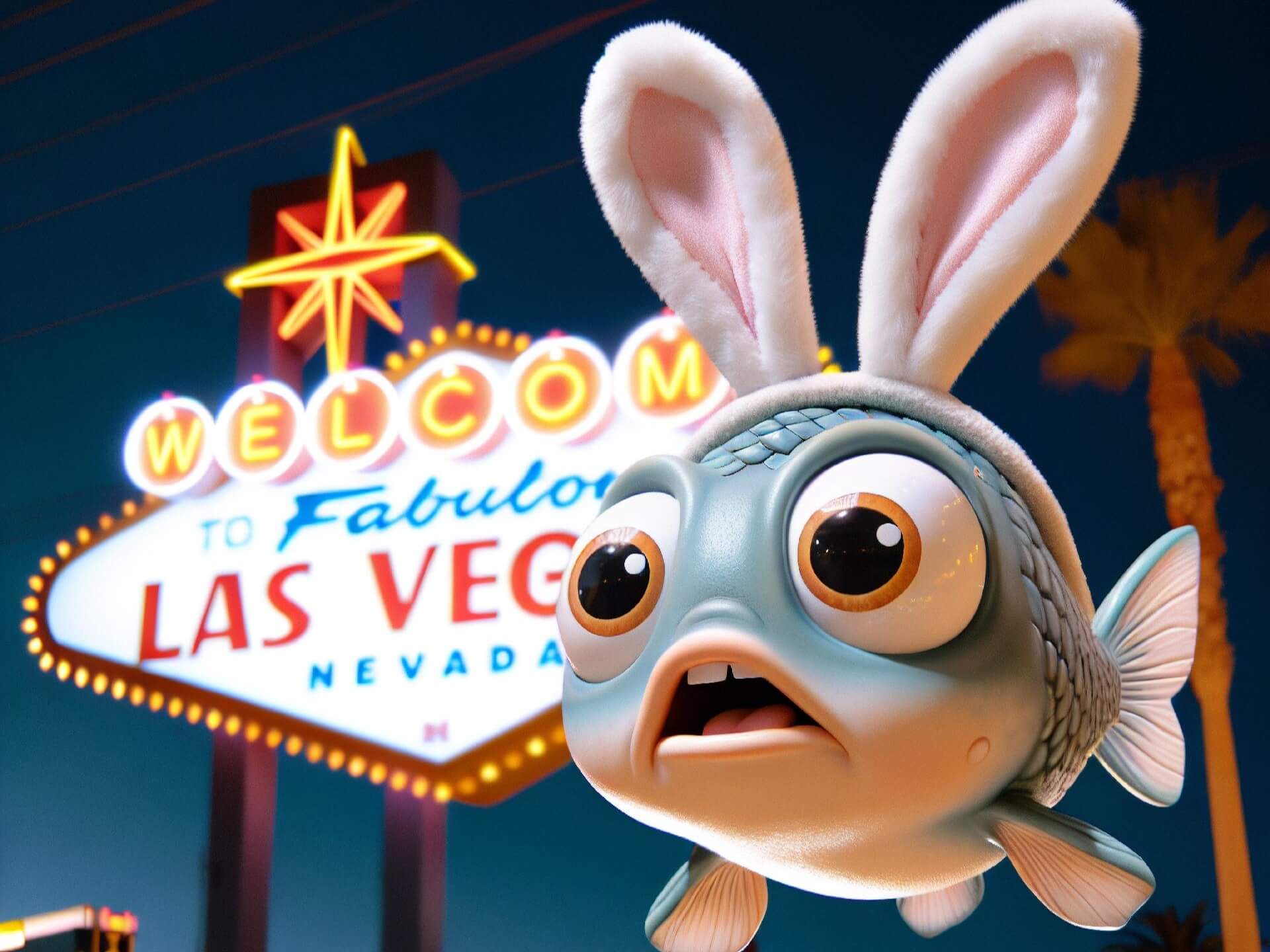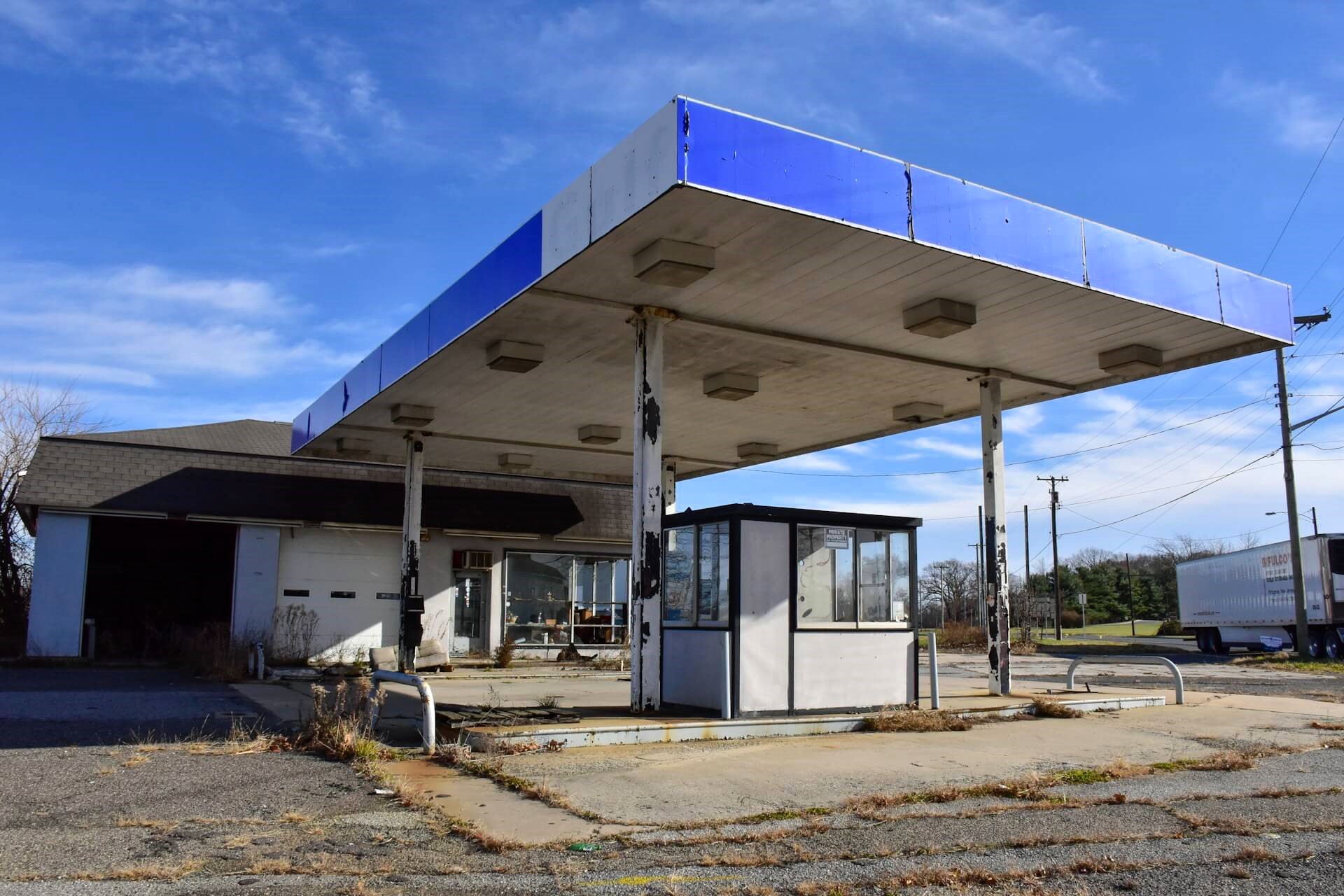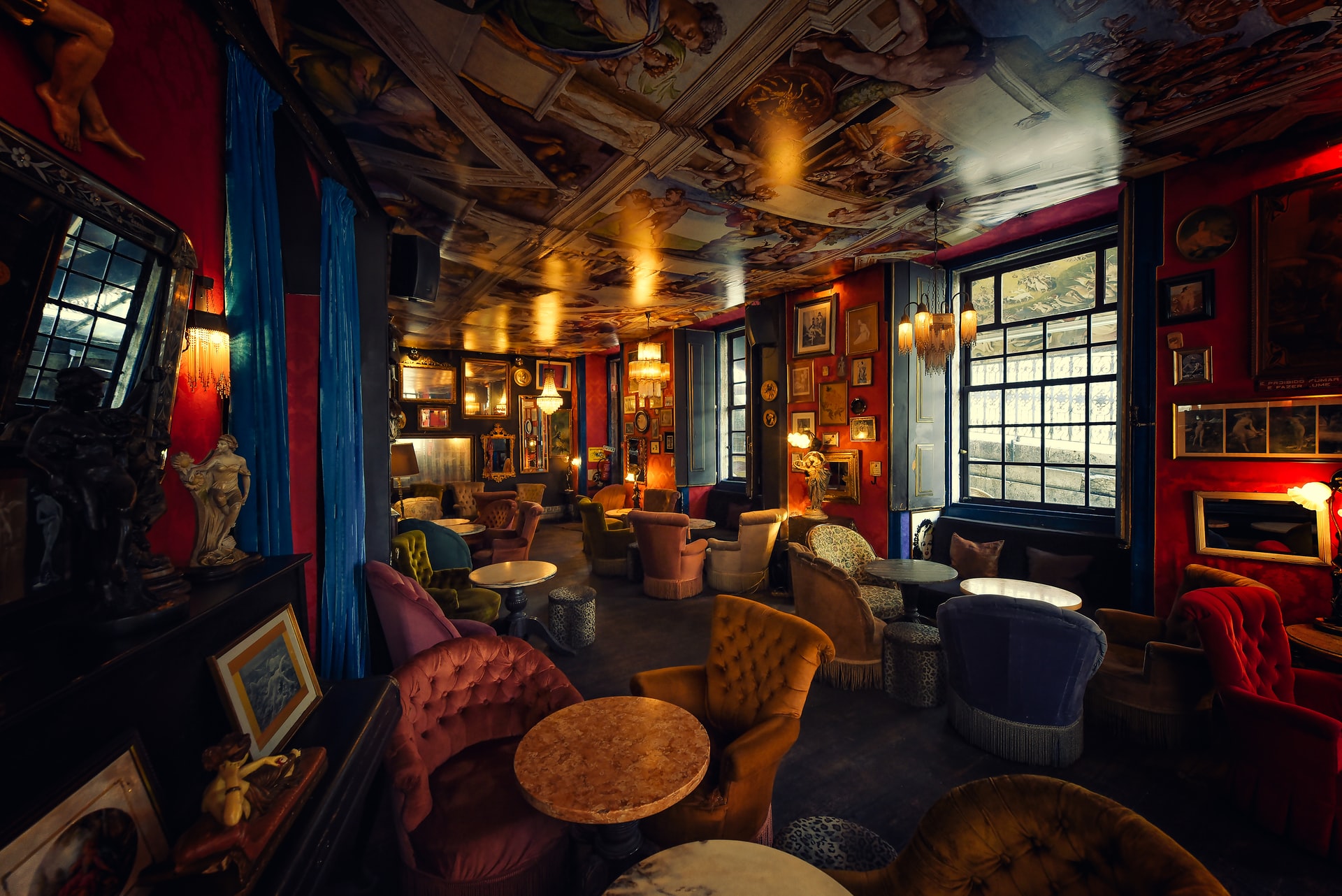BUNNYFiSH: A Lesson in Collaboration
by David Klemt

Honestly, I’ve seen stranger things than a floating fish wearing bunny ears while living in Las Vegas.
Architect Craig Sean Palacios, co-founder of BUNNYFiSH studio in Las Vegas, told a compelling story about professional relationships during HD Expo 2024.
Palacios and his business partner worked closely with former Zappos CEO Tony Hsieh for a decade. Titled “Meaningful Collaboration: A Decade with Tony Hsieh,” the presentation was an interesting look into a unique client relationship.
When BUNNYFiSH studio first started, Palacios and Wichmann were working out of The Beat Coffeehouse. Interestingly, this space, located in Downtown Las Vegas, was an example of adaptive reuse architecture. The space was transformed from a quick-care medical center into a coffeehouse, with small exam rooms converted into small offices.
As Palacios recalls, he was wrapping up for the day about 14 years ago when someone popped their head into the BUNNYFiSH office. This person asked what Palacios was doing, and he answered that he was leaving for the day. Clarifying their question, the person inquired about BUNNYFiSH.
After explaining the studio’s overview and sharing some project details, Palacios was told the person would be back. Well, that person did return, and he had a few more people in tow. One of these people, as I’m sure you’ve guessed, was Hsieh.
Eventually, the group traveled from The Beat to the streets of Downtown Las Vegas, and through the doors of Hsieh’s apartment. Along with people milling about was a wall loaded with Post-It Notes. Written on these notes were words like “speakeasy” and “restaurant.” As an architect, Palacios instinctively began arranging the notes to create logical, cohesive concepts.
From there, Hsieh led Palacios to an empty lot, and asked what the architect would put there. Palacios saw a grocery store. Hsieh, a butterfly farm.
It was in that moment, said Palacios, that he began to understand Hsieh. After what was essentially an entire day with Hsieh, BUNNYFiSH studio, the Zappos CEO, and his team would go on to discuss architecture for several months.
Speaking the Same Language
During at least one conversation, Hsieh made the statement that he didn’t “speak architect.” And to this day, Palacios isn’t quite sure if that was a completely truthful claim.
However, he was told that no architect had ever really been able to make Hsieh happy up to that point. So, it appears that the two had found an effective method of communication, and Hsieh appeared happy to work with BUNNYFiSH studio.
That method did take time to develop, of course. Take, for instance, the transformation of a building in Downtown Las Vegas that Hsieh had acquired. When Palacios asked what Hsieh wanted, the latter told the former to “go to the W in Austin.”
That was the whole of the instruction.
So, with that as the entire brief, BUNNYFiSH went to the W in Austin. And, as Palacios explained, they did basically everything one could have done at the hotel at that time. Upon their return to Las Vegas, Palacios made the call to simply let Hsieh find him at The Beat when he was ready.
Sure enough, that’s what happened a few days later. Basically, Hsieh wanted BUNNYFiSH to transform his building into the W in Austin, in a way. When Inspire first opened, I visited the speakeasy—which required biometric access, I believe via a retinal scan—and I would later watch Hey, Bartender in the space’s theater/TED Talk area, hosted by Dushan Zaric, co-founder of Employees Only.
Making Things Happen
Hsieh would go on to work with BUNNYFiSH on more projects, large and small. In doing so, they would all transform the Downtown Las Vegas landscape and culture.
To provide one large-scale example, BUNNYFiSH took on the Gold Spike’s metamorphosis from old-school, outdated casino to nightlife, social, and event space. This is another concept with which I’m familiar, having hosted an event there with the Bar & Restaurant Expo team when the event was still known as Nightclub & Bar.
There was also a small downtown motel conversion. Since “nobody needs parking in Las Vegas,” the parking lot was ripped out and a six-hole putt-putt course was installed. Of course, it wasn’t that simple; each hole was a version of a world-famous counterpart.
Anyone who has spent time in Downtown Las Vegas will be familiar with another BUNNYFiSH-Hsieh collaboration: Container Park. However, it’s a dog park project that really encapsulates the real message within Palacios’ story.
Per the Las Vegas native, Hsieh was a part of most of the meetings between his team and BUNNYFiSH. From time to time, he’d pop his head into a meeting with a question or idea, but that was about it.
Well, during one meeting, Hsieh popped up and asked if it was possible to build the world’s largest functional fire hydrant. By now several years into the relationship, Palacios knew the answer: “Yes.”
As he explained, he had learned to not say no to Hsieh. That may paint the entrepreneur in a tyrannical light. That isn’t, however, what Palacios meant.
Asking Why
While some clients can accept hearing “no” after they’ve asked a question, others need more. They require a why.
Sure, that’s sometimes because a client is, to put it diplomatically, “particular.” But as Palacios learned over the course of a decade-long collaborative relationship with Hsieh, sometimes “why” is a tool.
That three-letter question can spark creativity. Creativity in getting around but not running afoul of building codes, creativity in material or site selection, creativity in bringing an idea into the physical world.
While “no” is, indeed, a complete sentence, in the context of developing a restaurant, bar, hotel, etc., it can be a project killer.
Further, once one side of a business relationship comes to understand how the other interprets a why, communication grows stronger. Instead of just a conversation-halting “no,” collaborators learn to anticipate. So, that “no” starts out as a, “No, we can’t/shouldn’t do it that way, here’s why, here’s our solution.”
That’s a far stronger and healthier way to communicate and work together.
Real-world Example
Let’s look at a BUNNYFiSH project in Reno, Nevada. Traditionally, a guest room has a desk. And, traditionally, you’d be told by a hotel executive that the desk is so guests can write letters.
Well…which guests are actually doing this? Why are hotels still putting the same desk designs in their rooms?
Those two questions led to a room design featuring a reinvented desk. The BUNNYFiSH desk design is now the standard for the hotel group.
However, that desk design update pales in comparison to another change Palacios suggested.
Why, Palacios asked, did this hotel need a conference space? And why not transform the space that would traditionally be a conference space into…a bocce bar. A very large bocce bar, at that.
As Palacios explained the moment he posed those questions to hotel executives (a.k.a. major BUNNYFiSH clients), he was first met with silence. But that silence eventually turned to belief in Palacios and BUNNYFiSH, and there is in fact a bocce bar where one would expect a conference space.
According to Palacios, the bar is generating more revenue than the client projected they’d see from the conference area.
Takeaways
Too many people forget that “relationship” is the operative word in “business relationship.”
Had BUNNYFiSH seen their burgeoning relationship with Hsieh as solely transactional, they would likely have been relegated to the same pile of architects that hadn’t managed to satisfy Hsieh.
However, all parties developed an understanding of one another. They learned how to communicate with one another, and the results were incredible.
Further, Palacios and BUNNYFiSH learned to adapt that communication style for future clients, again to wonderful results.
Hospitality is a people business. As some people like to say, most problems are people problems. Going further, people problems are often communication problems.
Learning how to communicate and collaborate can solve a multitude of problems, and help develop long-term relationships.
Image: Shutterstock. Disclaimer: This image was generated by an Artificial Intelligence (AI) system.




